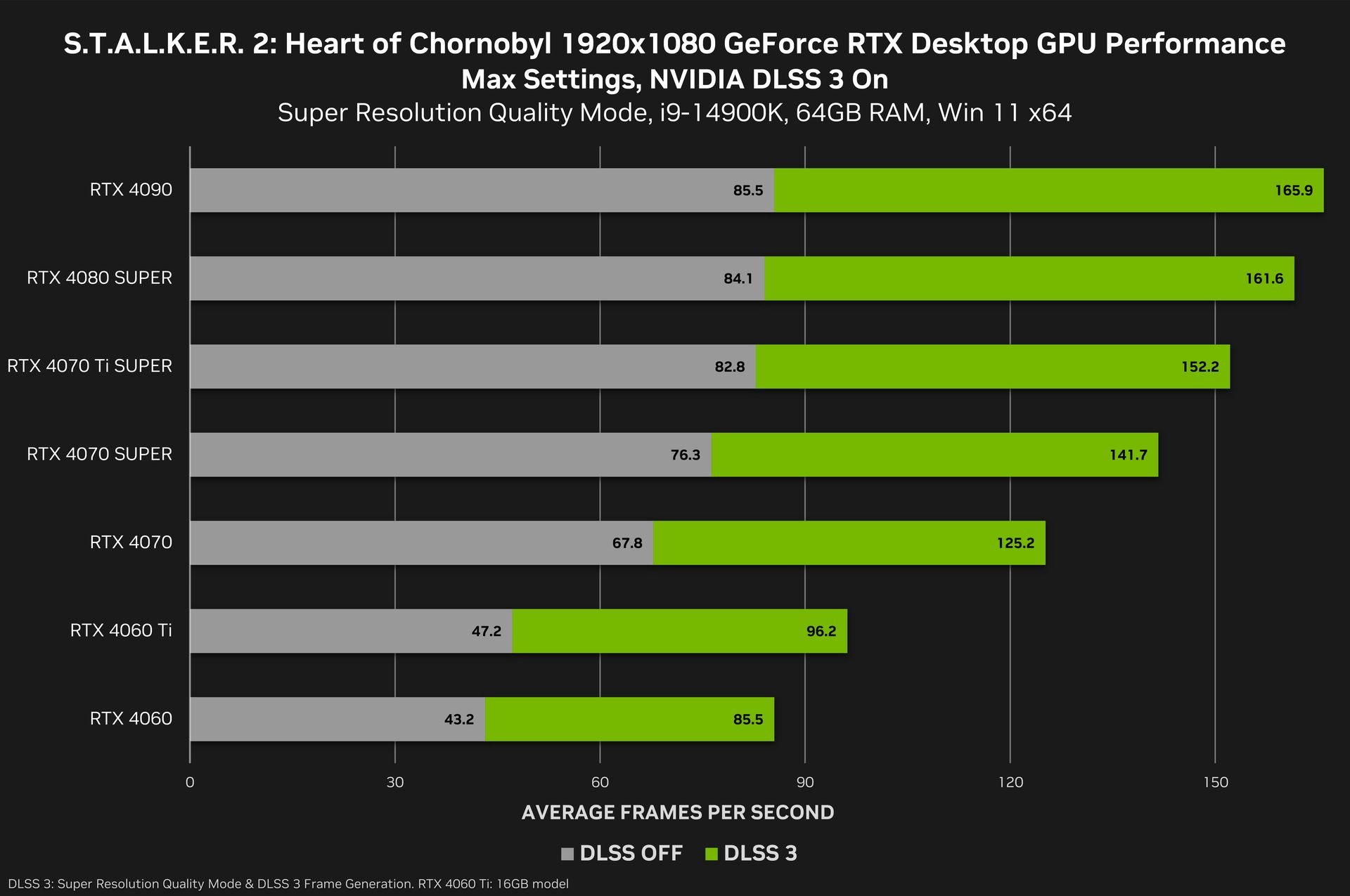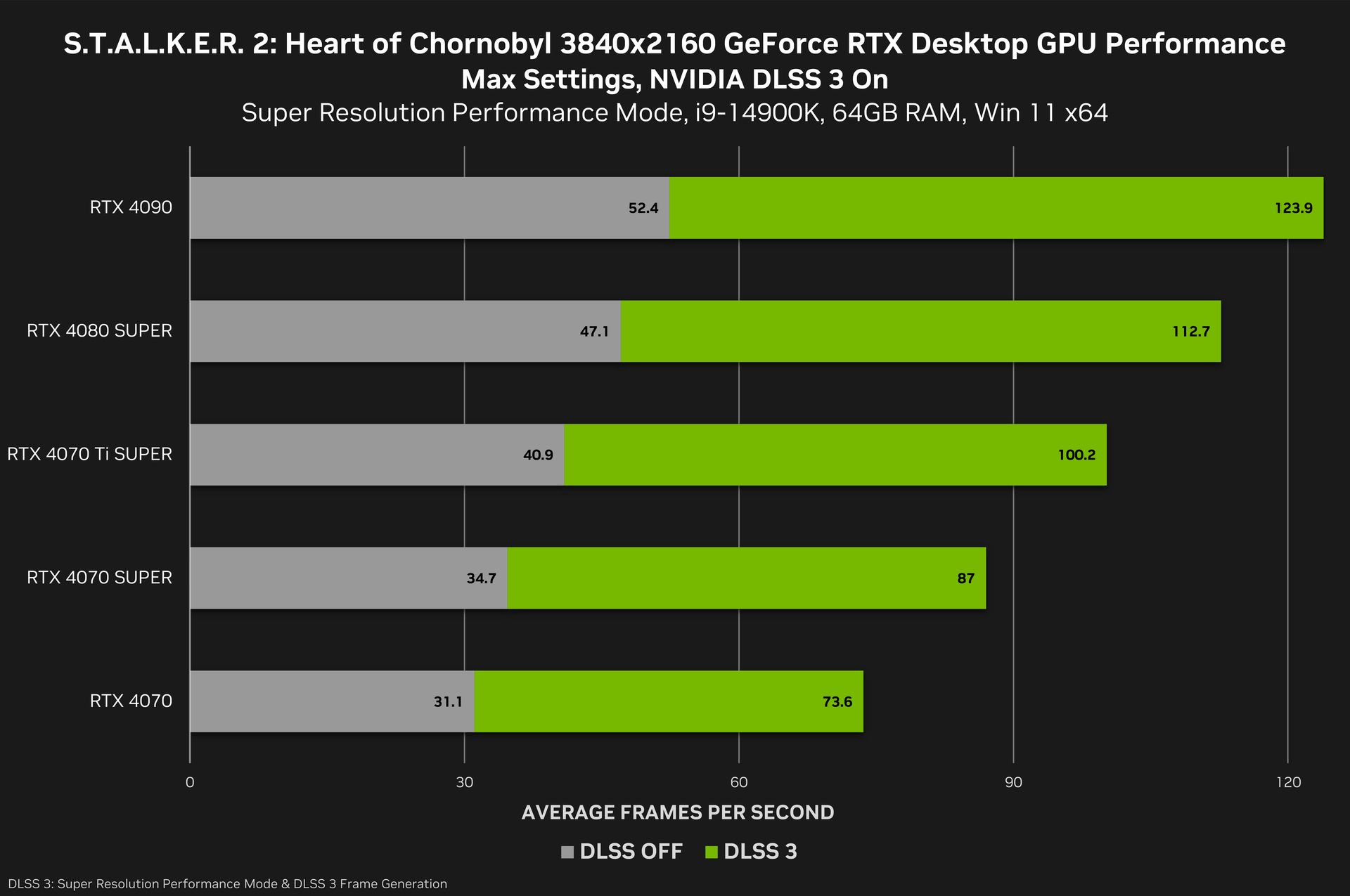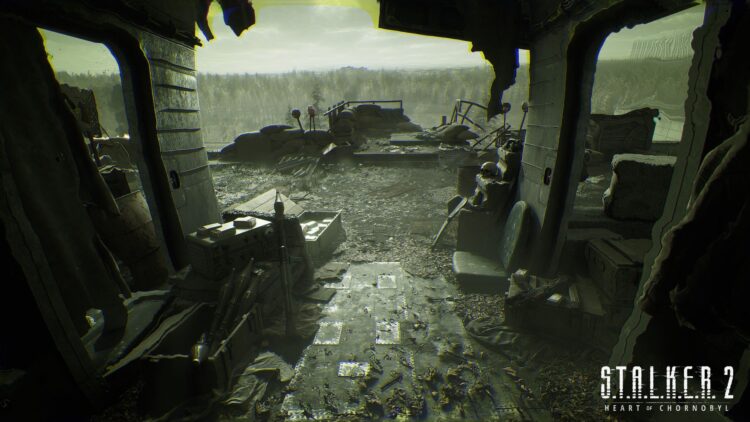NVIDIA has released benchmarks showcasing the impressive capabilities of its GeForce RTX 4090 graphics card while running the highly anticipated game STALKER 2: Heart of Chernobyl. The benchmarks show that gamers can run at 120 frames per second at 4K resolution with DLSS 3 enabled, a huge leap from previous-generation GPUs.
NVIDIA said the RTX 4090 can produce mind-blowing frame rates when testing an Intel Core i9-14900K processor with 64GB of RAM. The RTX 4090 can produce over 120 FPS when operating at full tilt in 4K with DLSS 3, equivalently more than double the 52 FPS it manages otherwise. The RTX 4070 does well, too, at 4K, especially because it goes up from 30 FPS to 70 FPS on average despite using the new DLSS 3.
How NVIDIA’s RTX 4090 and DLSS 3 set new benchmarks for STALKER 2 performance
That behavior continues down NVIDIA’s GPU lineup. The RTX 4070 SUPER gets an average of about 112 FPS, and the RTX 4070 Ti SUPER averages around 100 FPS. Marked improvements are also brought to lower-tier cards, where DLSS 3 can more than double the RTX 4060 Ti’s performance from 34 FPS to 73 FPS at 4K. This confirmation of performance scaling with DLSS 3 proves that the game feels smooth.
The RTX 4090 remains impressive at 1440p resolution, averaging a paltry 145 FPS, though obviously, we’d have slightly less need for ray tracing here than at 4K. Also, the RTX 4080 SUPER scores 135 FPS, and the RTX 4070 holds above 100 FPS already at 1440p. DLSS 3 enabled also provides substantial gains, going from 34 FPS to 73 FPS for the RTX 4060 Ti.

The RTX 4090 reaches an average of 165 FPS for 1080p gamers, a jump of 89 FPS from the RTX 4070 SUPER due to the DLSS 3 smarts built into the chip. The conclusion is that across resolutions, DLSS 3 is a game changer for STALKER 2, more than doubling the performance ceiling.
Though the results are impressive, there are some indications that STALKER 2 could suffer a little bit of CPU limitations. According to NVIDIA benchmarks, low Resolutions may hit a frame rate plateau, indicating there might be more reliance on the CPU than the GPU in performance at 1080p and 1440p. This is not new — as games move to lower GPU-demanding resolutions, performance increasingly relies on a stronger CPU. Finally, global illumination in the game may also include Lumen, allowing it to use a software-based approach rather than ray tracing and perhaps further adding to this theoretical bottleneck. Being dependent on the CPU and variable quality, meaning optimization for the GPU and the CPU, will be key to achieving the best results.

Also, STALKER 2 has fairly heavy system requirements, so gamers should know about the game. Some advise that players must have a large amount of storage (160 GB) and a minimum of 16 GB of RAM to play the game to its full potential. Those with capable systems should also expect a promising outlook from NVIDIA’s benchmarks, as DLSS 3 promises a superior gameplay experience.
Now that we’re just days away from STALKER 2’s launch date on November 20, there’s a lot of talk about expectations for those wanting to traverse the irradiated terrain of Chernobyl. NVIDIA’s RTX series and DLSS 3 combine to create an exciting new benchmark for gaming pleasure. Initial performance indicators for STALKER 2 are that this will be a visually stunning, fluid, and immersive adventure through a post-apocalyptic world for everyone who dares venture into it.
Featured image credit: STALKER 2





